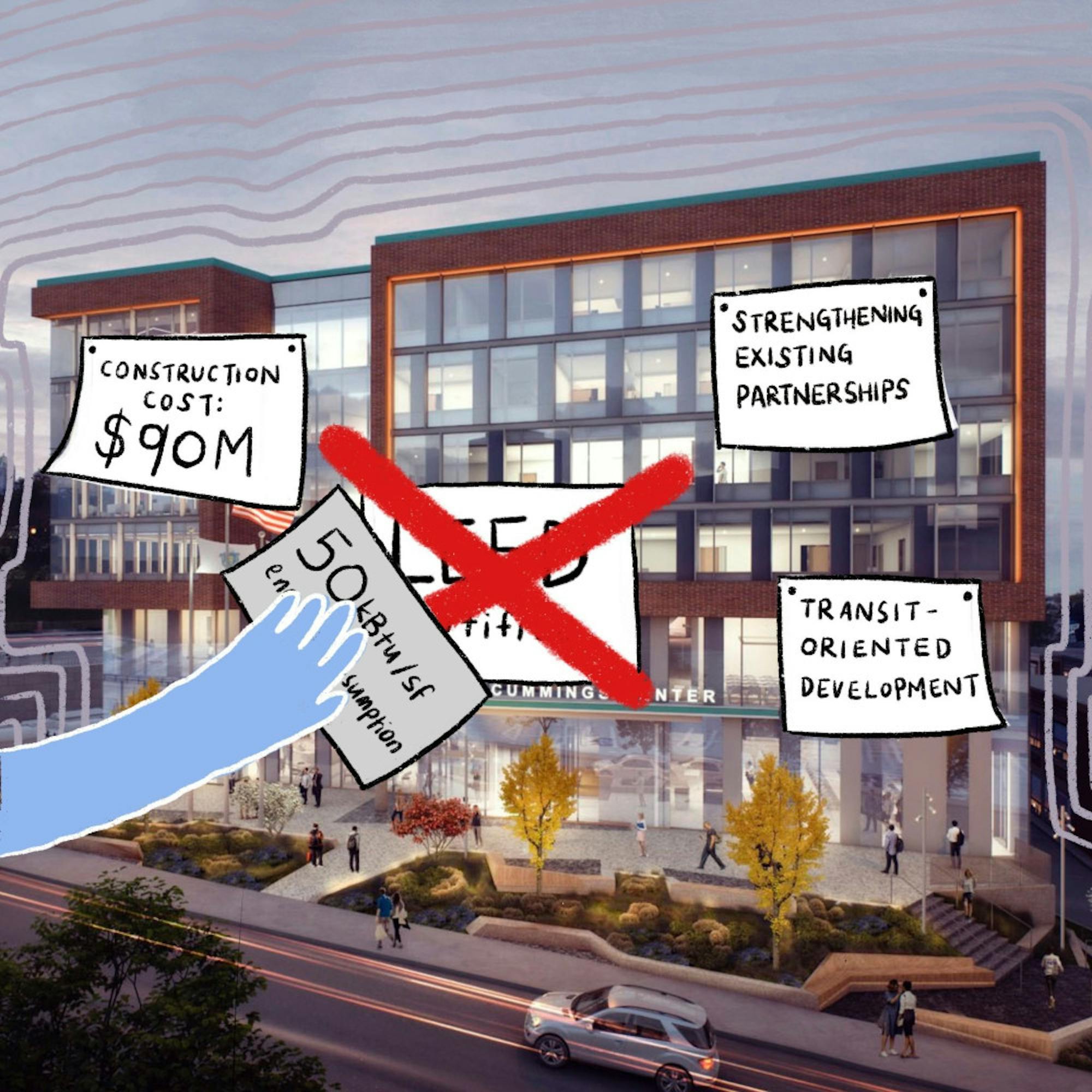Last September, the Daily reported on the Joyce Cummings Center, which is currently under construction at the corner of Boston and College Avenues. According to Director of Strategic Capital Programs Ruth Bennett, the new building will not be Leadership in Energy and Environmental Design (LEED) rated. This outcome is surprising given this certification’s clear value and credibility as the most widely used green building rating system in the world and the U.S. Green Building Council’s urging universities to gain this certification for their buildings. While Tufts reassures students that sustainability remains a priority for this new center, transparency about the building’s environmental implications takes the back seat with this decision. LEED certification holds institutions accountable to meeting sustainability standards about building materials, water savings, energy efficiency, waste management and overall sustainable development. While we recognize cost as a factor in Tufts' decision — as certification may cost a maximum of $22,500 — the benefits of this certification clearly outweigh this factor given the current environmental crisis; Tufts must LEED certify the Cummings Center in order to address this impending disaster, promote transparency and create a more sustainable campus.
As a university that values innovation and the creation of a promising future for its students, it is Tufts’ duty to support sustainability and our environment like its students actively do. Climate change is an extremely pressing issue, and our campus should not be exempt from monitoring its environmental impact, which includes being held accountable to environmental standards in its construction of new buildings. This also falls in line with student voices and activism: Many student groups tirelessly strive for a more environmentally conscious campus, including Tufts Climate Action (TCA), Students for Environmental Awareness (SEA) and Tufts Energy Group.
In many ways, Tufts supports these important voices in their current plan for the Cummings building, but it must follow through on these values by gaining LEED certification for the center. Bennett told the Daily that the building aims for 50 kBtu/sf of energy consumption, which is more efficient than the highest LEED rating, and that the center will feature an environmentally conscious design, including energy-efficient triple glazed windows and solar panels on the building’s roof. These attributes of the current plan illustrate Tufts’ applaudable commitment to sustainability but lacks a level of accountability that would ensure follow-through and limit inconsistency in the building’s environmental footprint.
LEED certification would fix this missing element and assure the university’s transparency about the building’s environmental impact, for it inherently holds organizations accountable to standards for its environmental practices. In order to receive certification, buildings must be reviewed based on seven factors: “Integrative process, Location and transportation, Sustainable sites, Water, Energy, Materials and resources, and Indoor environmental quality.” By undergoing this extensive review, buildings and organizations remain transparent about their sustainable practices, for they must meet rigorous, thorough standards in order to receive certification.
By gaining this certification, Tufts not only becomes more environmentally accountable but also benefits as as institution with relativity little financial deficit; the certification acts as a clear demonstration of Tufts’ commitment to sustainability, which the university can use to their benefit through marketing and public relations initiatives. Tufts also economically benefits as meeting LEED certification standards leads to over $2 billion in water, energy, waste and maintenance savings. Additionally, the actual cost of LEED certification is minimal relative to these benefits as well as to the costs of the Cummings Center and other university projects. Tufts estimates it will spend approximately $90 million on the construction of the Cummings Center and 2 million for the Tufts name appear in the new MBTA stop, so the maximum $22,500 needed for LEED certification proves minimal in comparison, especially with the clear benefits and necessity of LEED certification in mind. If Tufts is not willing to invest this amount but will spend millions of dollars just to name an MBTA stop, its priorities are clearly skewed and should be shifted toward transparency about efforts to combat the urgent climate crisis.
The strides already made by both Tufts and other universities toward LEED certification act as a testament to the feasibility of this important action. Many Tufts buildings are certified such as Sophia Gordon Hall, 200 Boston Ave., the Collaborative Learning and Innovation Complex building at 574 Boston Ave. and the Science and Engineering Complex; the university’s experience with the certification process demonstrates the practicality of pursuing LEED certification for the Cummings Center. By doing so, Tufts follows in the sustainable path of institutions like the University of Illinois, Urbana-Champaign and Dickinson College, which mandate LEED Certification for all new buildings.
Through LEED certifying for the Joyce Cummings Center, Tufts claims a title as a transparent institution that values student voices, sustainability and the overall betterment of our campus. Ultimately, the Cummings building is for the Tufts community, and LEED certification would make the information about the building’s sustainability accessible to this community; this certification is vital to the preservation of community values, involving both the administration and the rest of our campus.
Editorial: Tufts must value transparency, pursue LEED certification for Cummings Center






